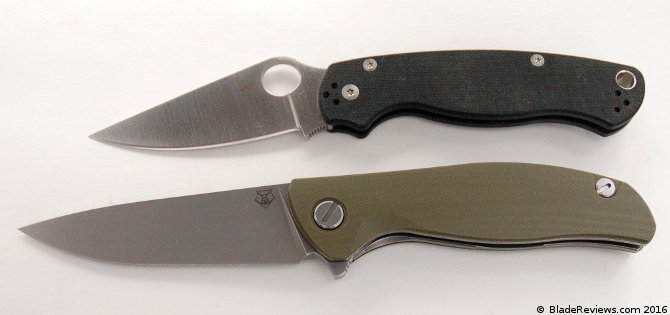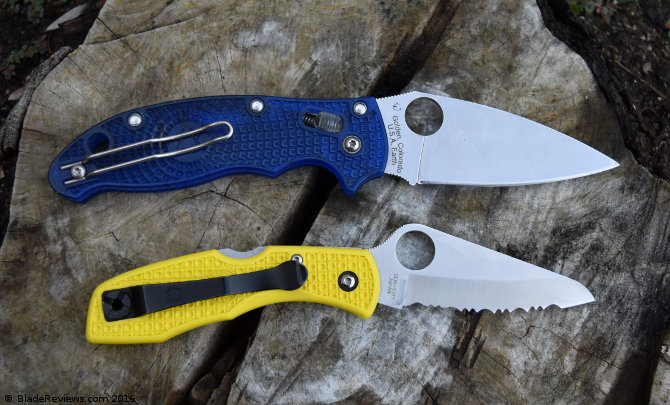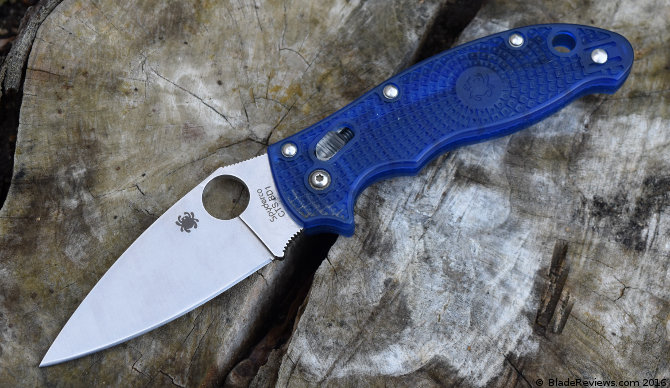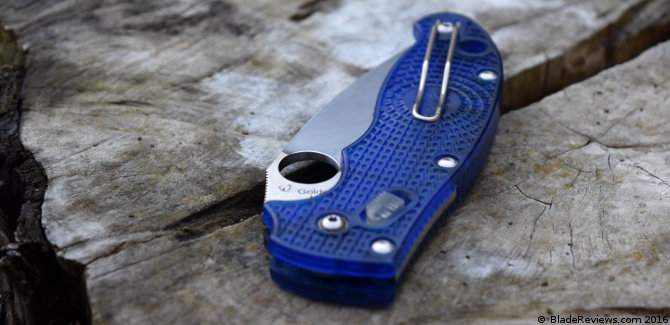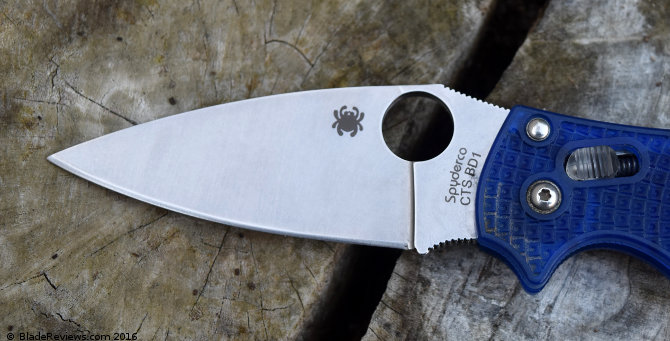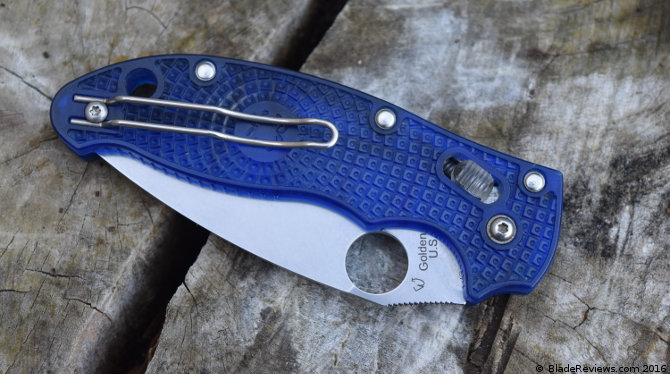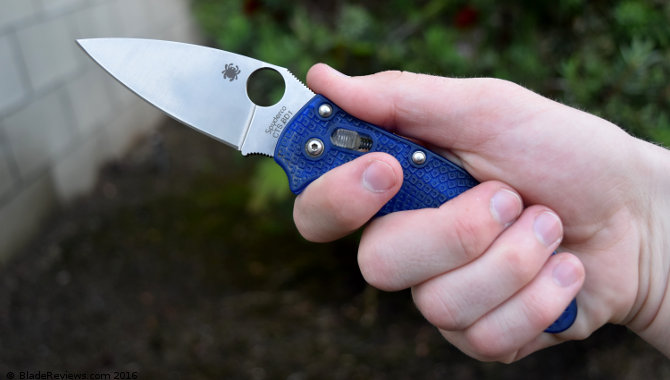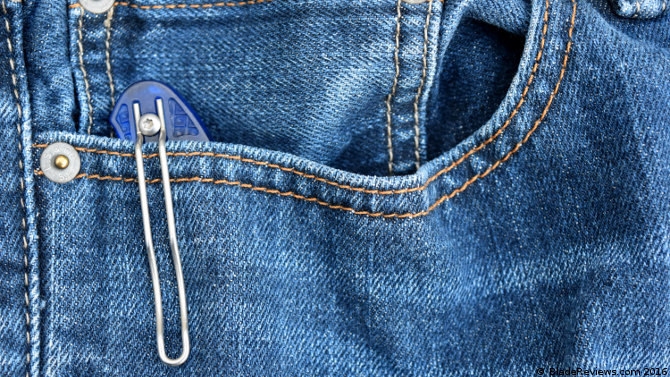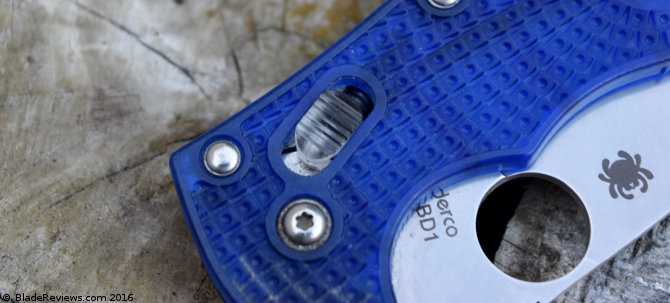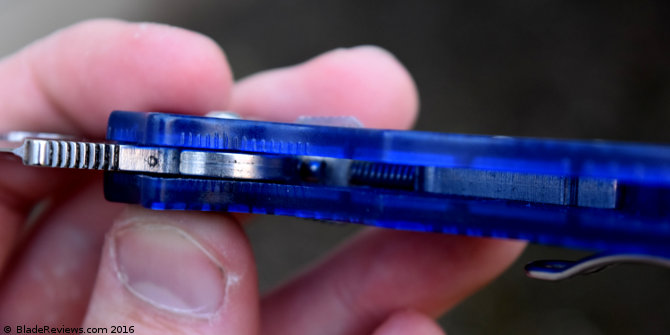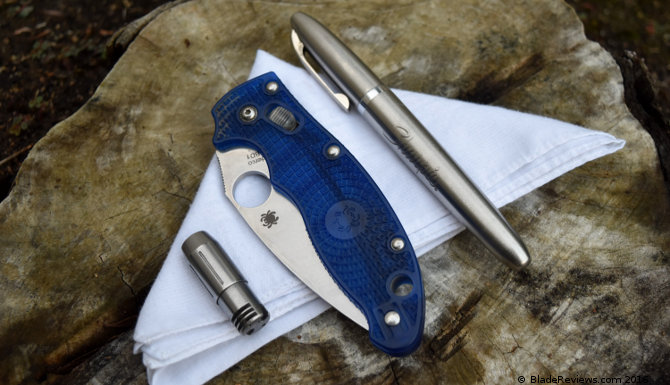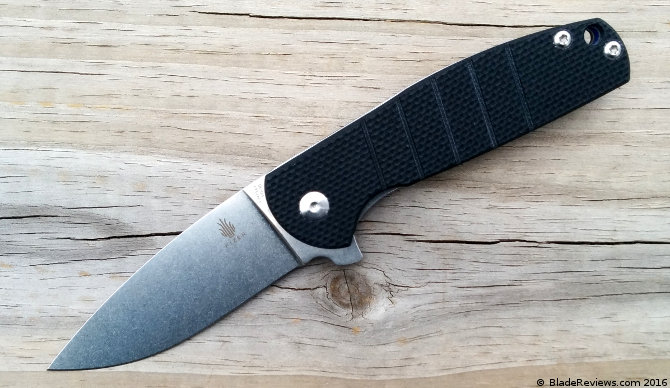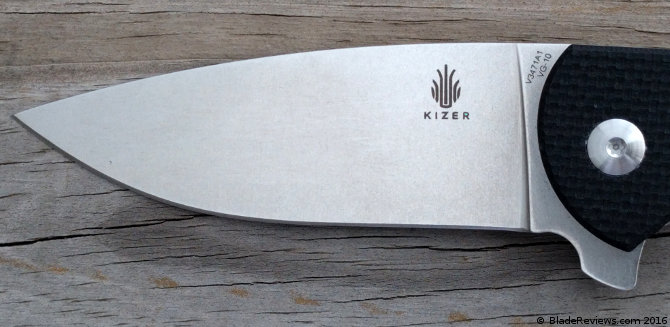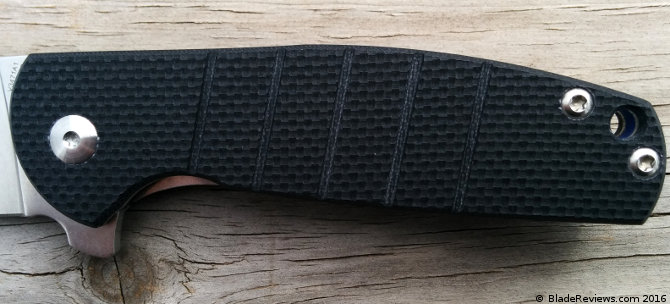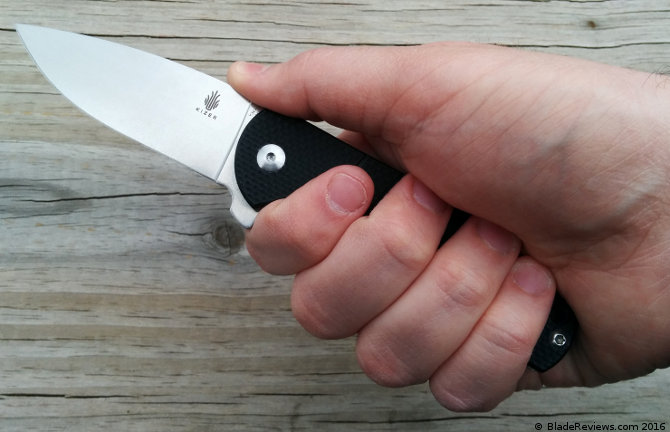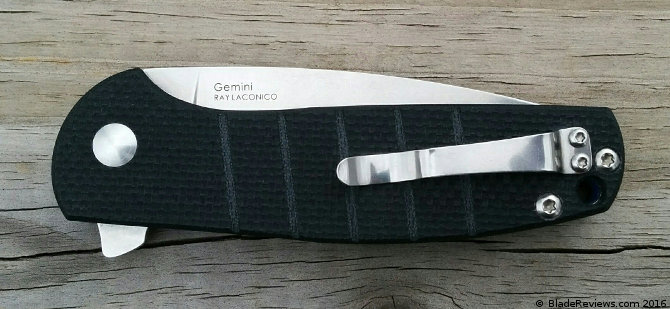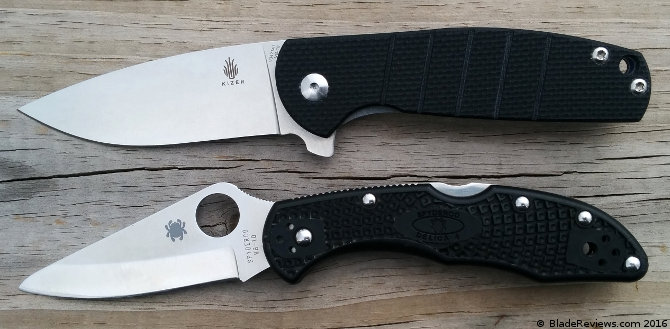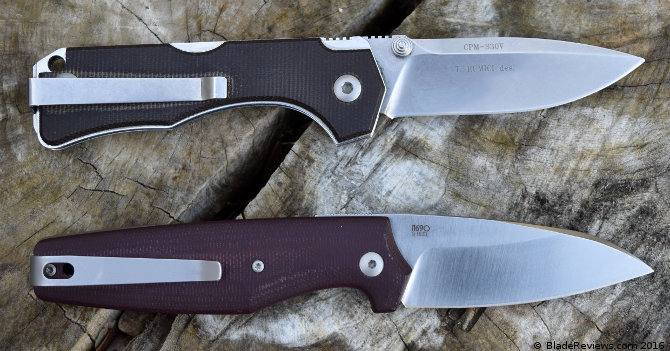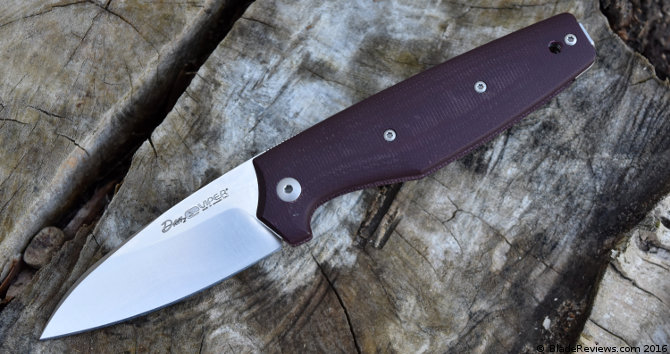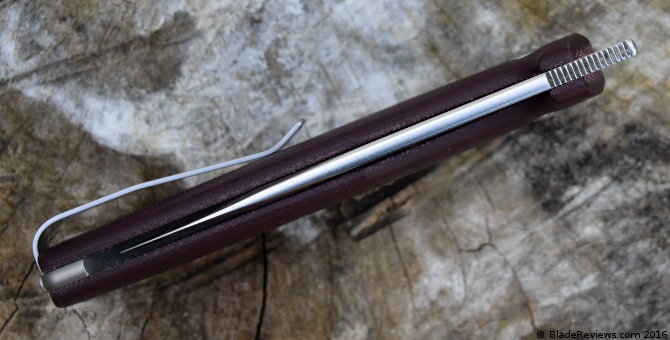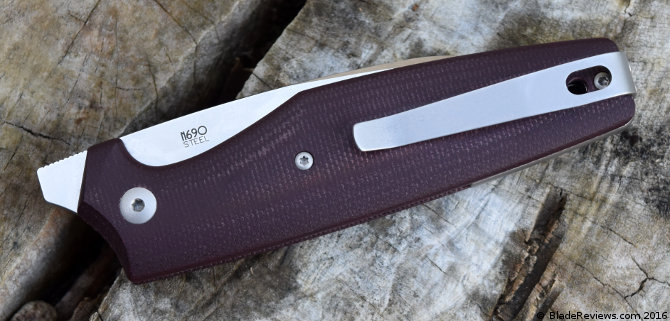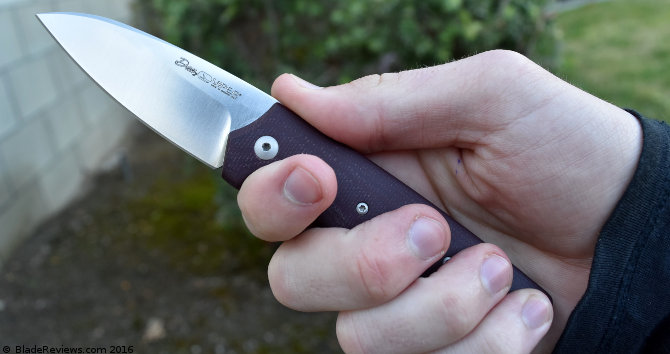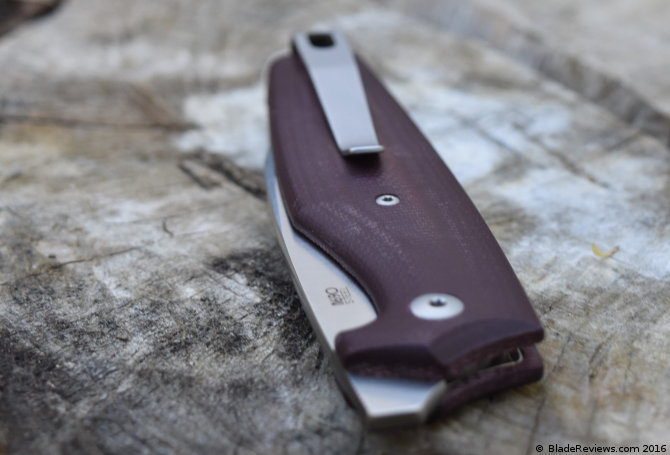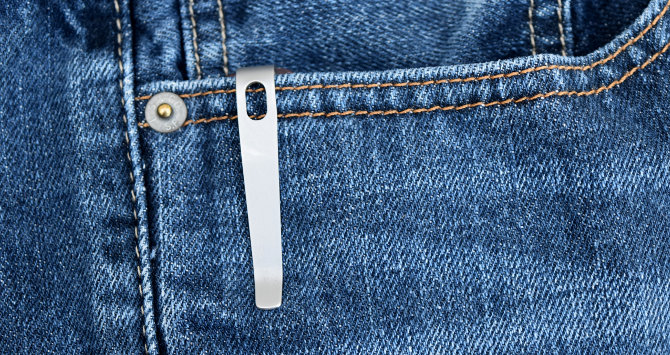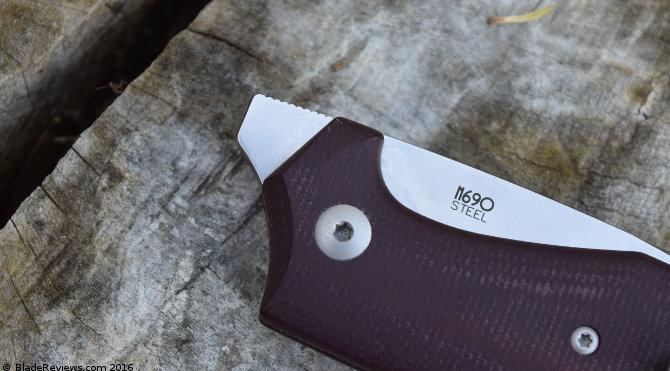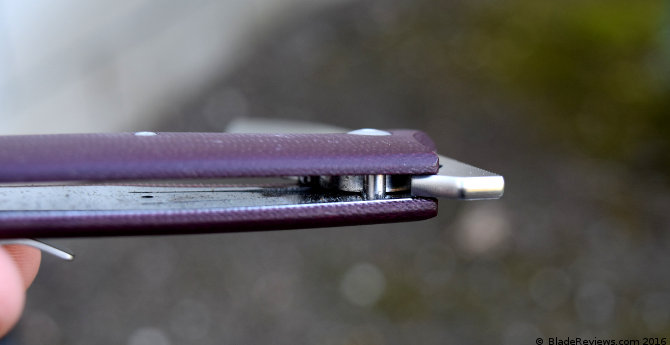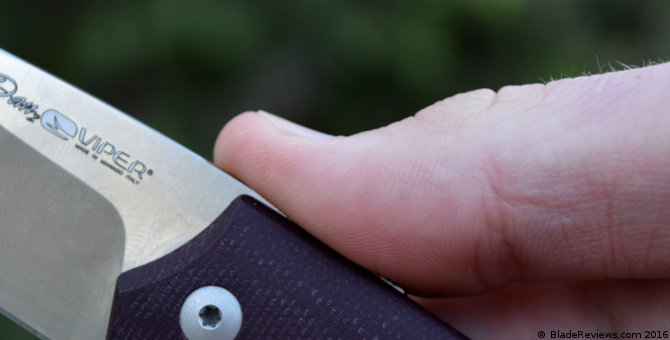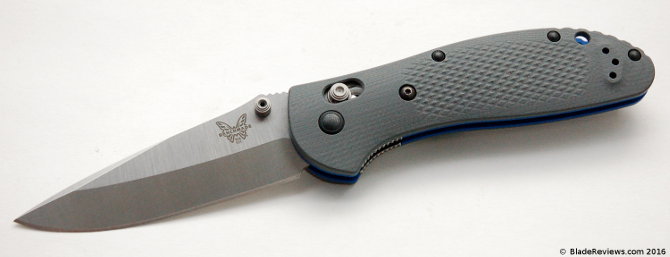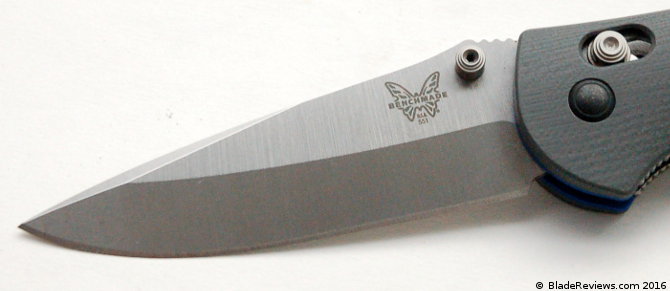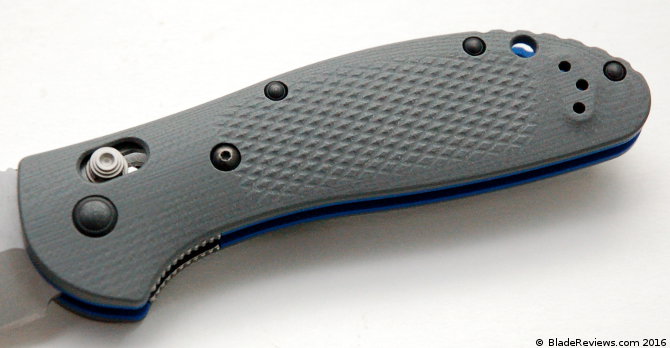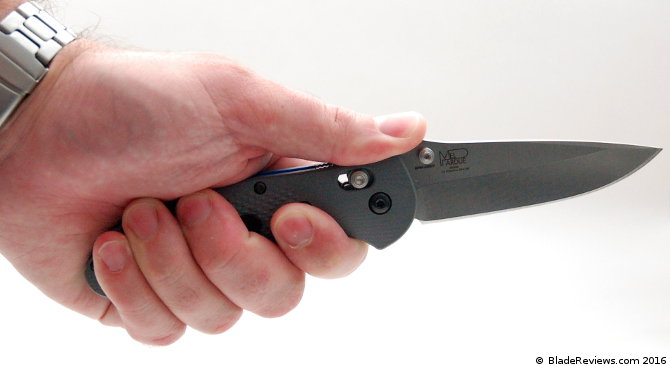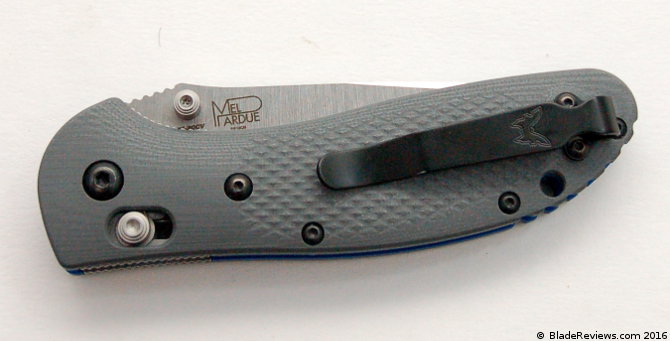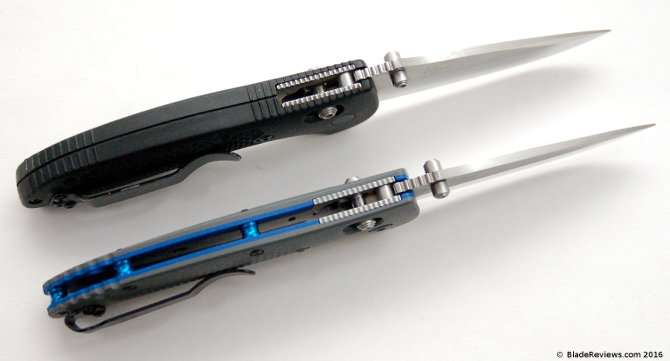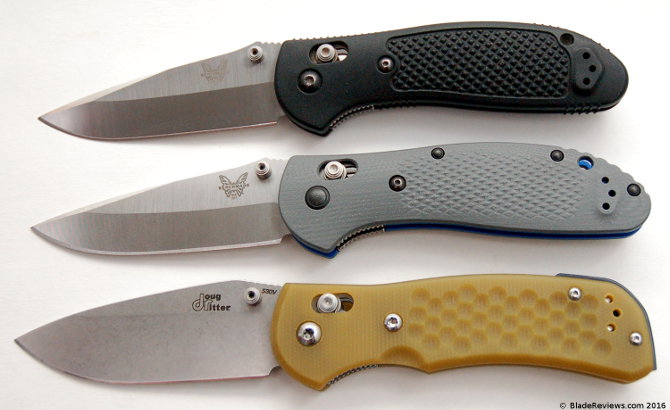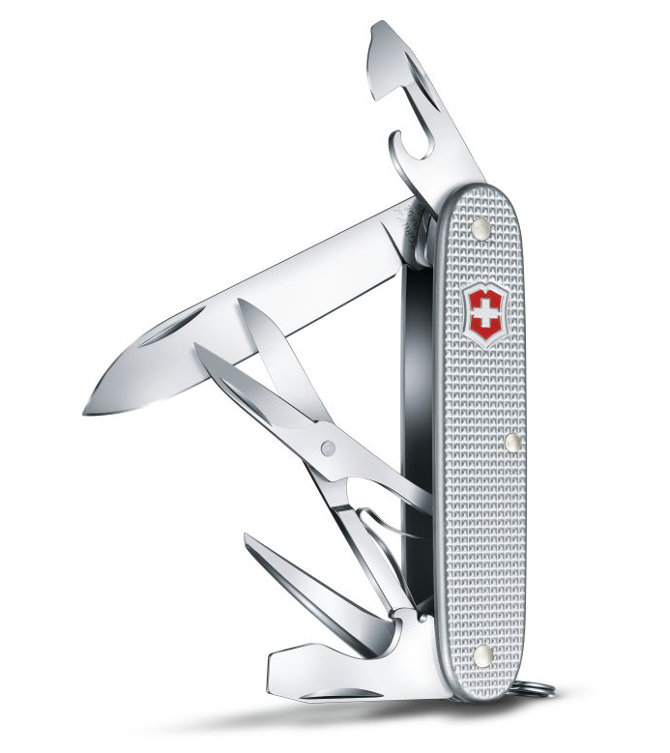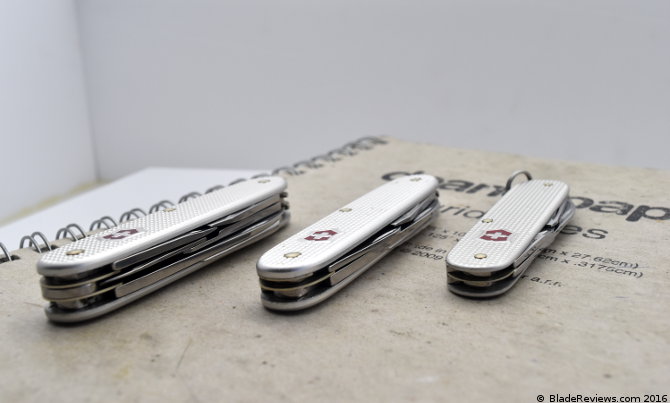Last Updated: July 27, 2019
The Shirogorov 95t is arguably the nicest knife I have reviewed to date. It is a beautiful piece embodying all the characteristics one would seek out in a high end titanium framelock flipper: top shelf materials, amazing action, a beautiful design, plenty of details, and an otherwordly level of machining, fit, and finish.
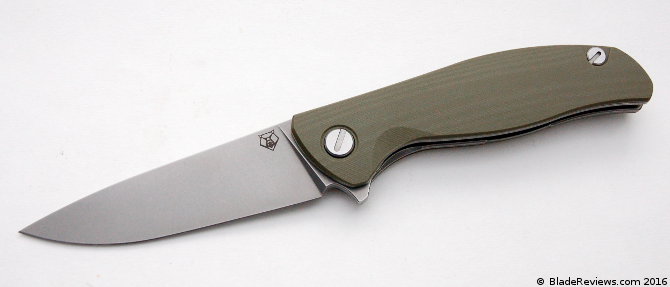
Buy the Shirogorov F3 at BladeHQ
The 95t was undoubtedly a sweet piece of steel, but like many high end knives in my collection it was eventually sold off to fund other purchases. I paid over $700 for the 95t, and at that price point I didn’t feel comfortable keeping the knife in my collection, let alone actually using it on a regular basis.
The 95t was almost too nice to use.
I noted in my 95t review that prices on these knives had dropped to what I thought was a reasonable level. Over the past year the secondary market prices on Shirogorov knives have continued to drop. While trolling the buy/sell/trade section of Bladeforums one evening I stumbled across the Shirorogov F3 that you see in this review. The price tag was around $500. It’s still big bucks for a pocket knife, but I couldn’t resist after letting the 95t go.
The F3 is the liner lock version of the 95. This G10-clad linerlock flipper seemed a little less ornamental than the 95t, and a touch more practical. I was excited to bring a Shirogorov back into the collection.
General Dimensions and Blade Details
The F3 has an overall length of 8.75″, a 3.875″ blade, weighs of 5.1 ounces, and is made in Russia. Some call the F3 the “Sebenza of Flippers”, and for good reason. I think the tolerances are on par with offerings from Chris Reeve Knives, and in some ways I think Shiro’s manufacturing prowess is superior.
In contrast to the 95t, this bead blasted and G-10 handled F3 feels more like a tool knife than a collectible. It lacks the ornamentation and detail of the 95t, but retains the elements of what makes a Shirogorov special. It is also executed with the same eerie precision of their more expensive knives.
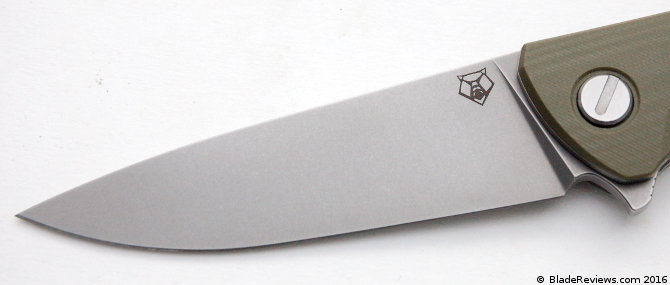
One element of contention for me is that despite this feeling like more of a user, it’s still a ridiculously large knife with its near 4″ blade. Most people won’t be able to carry and use this in public. Those that can carry a F3 will probably opt for something less expensive (or perhaps even a fixed blade). These knives are immaculate, but I wish they would also offer a flipper with a sub 3.5″ blade. A version with a 3″-3.25″ blade would probably do well here in the States.
The blade pattern of the F3 is identical to the 95t. It features the exact same drop point profile and geometry. The major difference lies in the finishing. My 95t had some subtle and interesting jimping on the spine. It also had a nice bright stonewashed finish. In contrast, my F3 has no jimping and a simple bead blasted finish. The matte blade compliments the olive drab handles nicely, and I haven’t had any problems with this working finish (no rust). That said, some F3s include jimping, and you may be able to find the knife with a different blade finish.
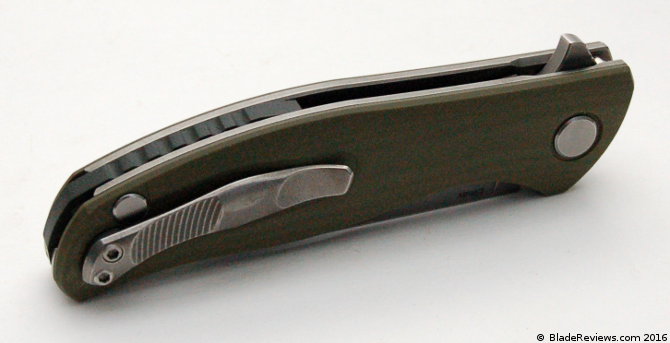
My particular F3 comes with Elmax blade steel, but it’s important to note that Shirogorov has released the F3 in a number of different blade steels including S30V, S90V, Vanax 35, and even 440C.
Elmax is a high end steel with a good combination of edge retention, ease of sharpening, and corrosion resistance. The full flat grind of this knife gets thin behind the edge and the knife has no problem with breaking down packages, cleanly slicing through paper, etc. While most of these Shiros will sit on a shelf as a collectible due to their size and cost, these are fully functional knives. If you can carry a F3, then I think that it will make for a great user.
Handle, Ergonomics and Pocket Clip
The F3 features 3-D machined G10 handle scales over full titanium liners with a geared G10 backspacer and custom hardware. Like my 95t the fit and finish is excellent and there are plenty of details to enjoy. Every edge has been chamferred. The titanium liners have been tumbled to compliment the matte finished blade. The lanyard hole is inset into the backspacer rather than simply drilled through the entire body of the handle. The hardware is all precision machined.
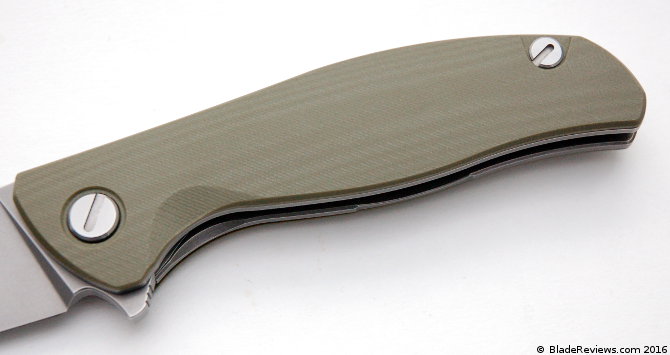
Speaking of hardware, if you decide to take the knife apart or adjust it use a coin wrapped in tape to avoid marring the slotted hardware. A regular flat-head screwdriver can wreak havoc on a Shirogorov.
The F3 is a comfortable knife thanks to its thick handle and simple shape. The 95t was a pretty comfy knife, but the addition of G10 scales takes the F3 to a different level as it helps fill the hand. The scales have been given a very light machined pattern and offer a little bit of traction. The simple handle shape will accommodate all sizes of hands. The pocket clip and backspacer are tucked out of the way to minimize hot spots. I won’t sit here and say I thrashed on this knife in the same way I have beat on some of my ~$100 knives, but I have used it for some extended cutting chores and it works well in hand.
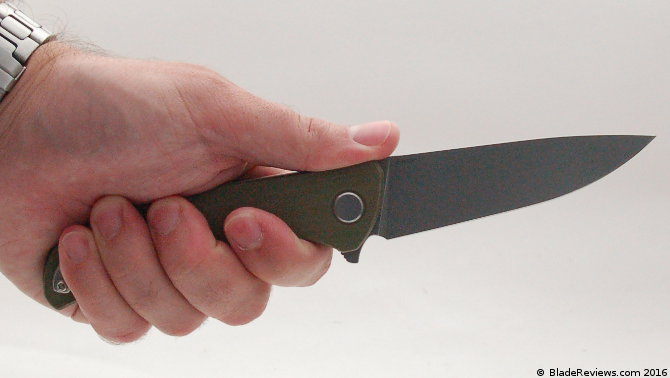
The pocket clip is a 2-piece milled clip. It’s attractive, discrete, and functional. A cool feature is that they milled out a section under the pocket clip, so the clip has a low profile and it also easily slips in and out of the pocket without destroying your pants. The series of grooves milled onto the outer face of the clip is designed to grab your thumb and help remove the knife. That feature works well, and the knife is easy to retrieve. The clip has a strong spring that offers excellent retention. This is not a low-rider clip, but the F3 still buries discretely.
The F3 is a large knife, and the inclusion of G10 scales make it significantly fatter than the all titanium 95t. So you will feel this knife in the pocket a little more. Still, I found the F3 carried well considering. At 5.1 ounces the knife is still lightweight for its size, and the strong clip keeps the knife in place in your pocket.
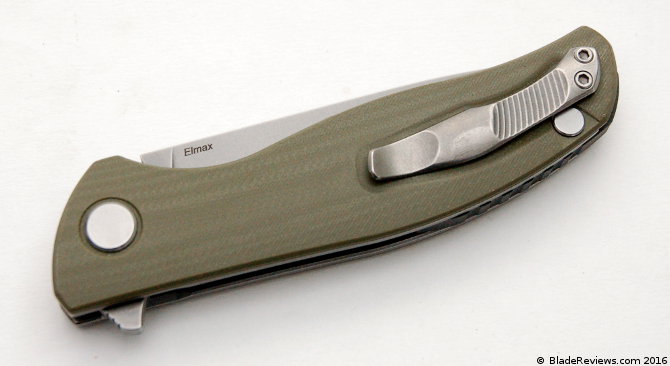
Deployment and Lockup
Shirogorov is known for producing fast firing flippers, and my F3 is no exception. The detent is tuned perfectly on this knife, and the blade fires crisply every single time with the blade locking open with a satisfying “snap”. My particular F3 is equipped with a single row of bearings, and the blade is capable of falling into the closed position simply by releasing the lock bar. It’s smooth. Since this is a liner lock, you never need to worry about your fingers contacting the lockbar and interfering with the flipper action like with a frame lock.
The F3 comes with a robust titanium liner lock. Don’t let the term “liner lock” turn you off if you are a framelock fanboy: this liner is actually thicker than some of the framelocks in my collection. My lock engages early and without any kind of play. If you look closely at the face of the lock you can see they included a stainless steel lock bar insert. There is no stickiness in the lock, and this is after flicking the knife open hundreds of times. The liner is also easy to disengage. This is arguably a “perfect” liner lock flipper.
Blade centering is perfect on my knife.
Shirogorov F3 Review – Final Thoughts
Just like the 95t, the F3 is a beautiful knife. I am a fan of pretty much every aspect of this knife. From design, to material selection, to execution, Shirogorov gets it all right. Given the price tag, that is what I expect.
If I were to find something to complain about with the F3, it would be the size. I don’t mind this being a larger knife, but would like to see it also offered in a smaller version. These days the trend is towards smaller more functional knives for urban carry, and I’d love to see Shirogorov jump on that bandwagon.
While I can’t promise this F3 will remain in my collection forever I think I will have a harder time letting it go than the 95t. I like the warmth of the G10 handles, but I also appreciate the more low-key and user-oriented approach to this F3.
Plus there are tons of full titanium framelock flippers on the market. Whether it’s the mid-techs coming out of the USA, high end Chinese framelock flippers, or higher end offerings from production companies like Spyderco and Zero Tolerance, the market is getting inundated with framelock flippers. There are relatively few high end liner lock flippers.
In closing, the Shirogorov F3 is a beautiful knife. If you have the cash and desire to check out a F3, then I can definitely recommend it.
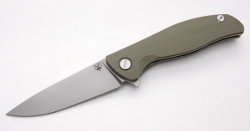
Shirogorov F3
From: BladeHQ
Occasionally Shirogorov knives find their way to BladeHQ, and I recommend purchasing them there. Please consider that purchasing anything through any of the links on this website helps support BladeReviews.com, and keeps the site going. As always, any and all support is greatly appreciated. Thank you very much.
